Prior to the invention of weather stations and other weather devices, people always tried to predict the weather based on the different patterns formed by the clouds? And although this method proved to be ineffective and inaccurate a lot of the time, it set the ball rolling for investigations and innovations that led to the invention of the advanced weather instruments present today.
Whether you’re a gardener, a professional meteorologist, or a weather enthusiast, you’ll agree that weather stations are helpful in many ways.
These stations measure atmospheric pressure, outside temperature, humidity, rain gauge, and several other important parameters that help in determining the precise weather condition of your location, which might be different from the weather app on your mobile devices.
The VEVOR 7-in-1 Wi-Fi Weather Station is one weather station you can trust to always do the job. It is designed to accurately monitor wind speed, wind direction, and temperature.
This leads us to the question: are weather stations accurate?
Table of contents
Are Weather Stations Accurate?
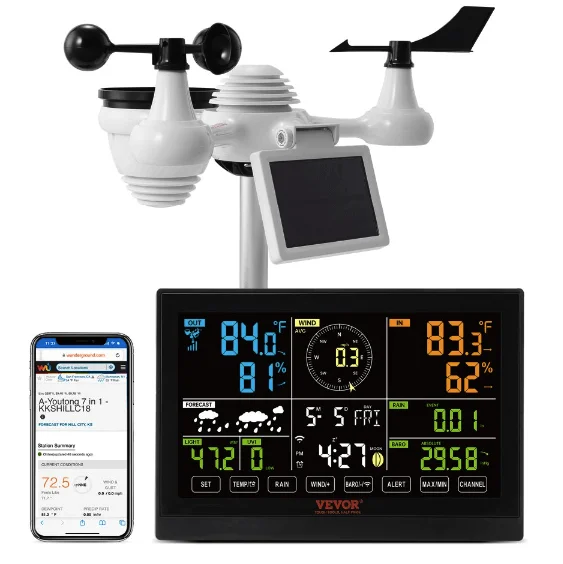
It is no news that the prevailing weather affects our everyday lives in so many ways. We need it to know whether it will be sunny enough to leave your sweater at home or if you’ll need an umbrella because of the predicted rain.
If you’re an agriculturist, you also need to know if your plants will need some extra shade from a scorching sun or if there will be enough rainfall to keep them healthy.
Weather stations can answer all of these questions. However, they must provide accurate results in order to be reliable.
So, what are the key factors that influence weather station accuracy? Let’s discuss them below.
Key Factors Influencing Weather Station Accuracy
Factors like sensor quality, calibration, and installation can influence weather station accuracy.
Let’s break down each factor.
Sensor Quality
Weather stations are able to track changes in weather elements because they are equipped with sensors. These sensors monitor different weather parameters. The different sensors include:
- Wind Direction Sensor
- Ambient Temperature Sensor
- Module Temperature Sensor
- Irradiance Sensor
- Wind Speed Sensor
- Humidity Sensor
If a weather station’s sensors have been compromised or are not of good quality, the weather station will provide inaccurate and unreliable weather forecasts. Therefore, it is advisable to invest in a weather station that is equipped with advanced, high-quality sensors.
Calibration and Maintenance
A weather station needs to be calibrated before you can start using it. However, a weather station’s sensors can shift from their original calibration over time. This can be due to rain, strong gusts of wind, or other harsh weather conditions.
If left unattended, the weather station can begin to produce inaccurate results. To avoid this, you must regularly recalibrate the weather station’s sensors.
It is also advisable to clean your weather station regularly. Since a weather station is to be placed outdoors, it can easily get exposed to rain, dirt, debris, and all manner of foreign objects. These objects can quickly latch onto your weather station, causing it to provide faulty readings.
Therefore, you must carry out regular maintenance to ensure that the weather station is thoroughly cleaned often.
Placement and Installation
How you install your weather station plays a huge role in how accurate its readings will be. Ensure you install or place it where it cannot easily topple over or be affected by trees and buildings, which can interfere with its sensors.
Place your weather station at least 4 feet above the ground to avoid interference from animals on the ground.
Additionally, ensure it is properly installed in a position that aligns with the current wind direction. This will help you get more accurate wind measurement results.
Addressing Common Accuracy Problems
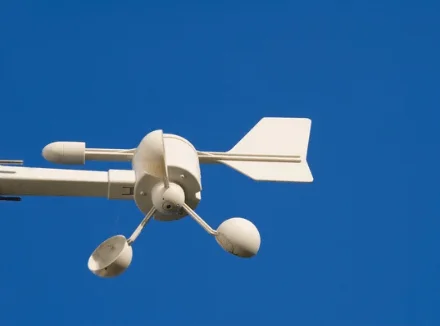
Now, let’s discuss some of the common accuracy problems that often arise when dealing with weather stations and how to remedy them.
Environmental Interference
As mentioned, weather stations belong outside. This means that certain environmental factors like trees and buildings can easily interfere with their data.
When mounting your weather station, choose a location that allows it to capture the best ambient weather conditions. Additionally, make sure that the airflow is not obstructed by any foreign objects and check to ensure that it is not in the way of any animals or pets that may interfere with its readings.
Sensor Drift and Calibration
Even sensors of the highest quality can degrade over time and begin to drift. For example, the humidity sensor in a weather station can begin to interact with gasses in the environment. Over time, this will cause the sensor to lose its sensitivity and drift if it is not properly maintained and recalibrated.
Calibration involves adjusting and fine-tuning the sensors of your weather station to ensure that it produces precise and accurate measurements. We’ll discuss how to properly calibrate your weather station like an expert shortly. For now, let’s discuss one more common weather station accuracy problem.
Software and Firmware Updates
Your weather station works with software and firmware that collects and manages data and displays it in real time to enable you to get regular updates easily.
However, this software is not to be installed once and forgotten about. Contrarily, the manufacturers of your weather station software may often update software updates to fix any bugs and enhance the accuracy of the weather station.
So, if you want your weather station to keep providing precise results, you must keep up with these updates, too.
Why Choose VEVOR Weather Station?
Have you been looking for a high-quality weather station that provides accurate results on which you can rely?
We have just what you need.
VEVOR Weather Station is equipped with an endless list of advanced features that can cater to every weather station-related need.
Still skeptical?
Let’s dissect the features of VEVOR Weather station that make it worth trying.
Advanced Sensor Technology
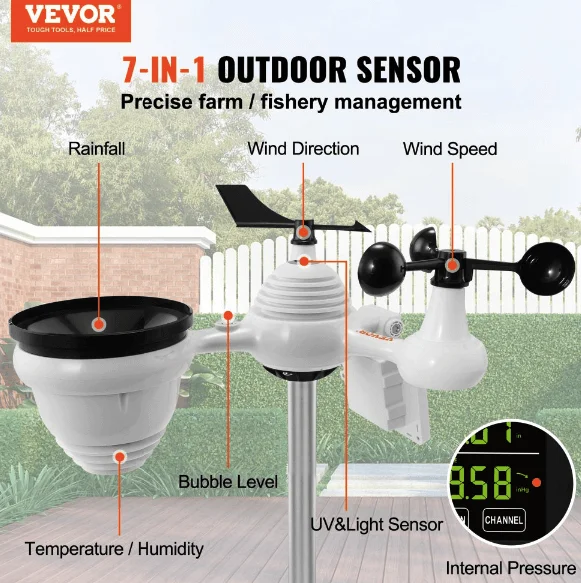
The VEVOR Weather Station is designed to provide the highest level of precision when it comes to weather results. That’s why it has a 7-in-1 sensor that is powerful enough to check parameters like wind direction, temperature, humidity, wind speed, and rainfall.
What’s more?
It is an advanced Wi-Fi weather station with modern sensor technology that displays the dew point, wind chill, and moon phase. With an impressive IPX6 waterproof level, the VEVOR Weather station still works optimally in heavy rainfall for up to 12 hours.
With this, you don’t have to worry about your weather station going off in the middle of a heavy storm. VEVOR has got you covered!
Recommended For Your Project
Easy Calibration and Maintenance
Now let’s talk about calibration and maintenance. As mentioned, these are two important aspects of keeping a weather station.
If you’re worried about keeping up with tedious calibration and maintenance procedures, you don’t have to because VEVOR makes it easy peasy.
The VEVOR Weather Station is incredibly easy to calibrate and maintain. It is easy to mount and dismount, allowing you to clean it when necessary. It also transmits real-time data and allows you to monitor the weather from the comfort of your home. That way, you can quickly know when there’s a need for maintenance or recalibration.
Accurate Data Collection and Reporting
What good is a weather station if it can’t provide accurate results?
Your guess is as good as ours– no good!
VEVOR prioritizes accurate data collection and reporting to ensure that you get the most accurate weather results possible. It is not only designed with cutting-edge sensors that provide accurate data, but it is also designed with intuitive reporting tools.
The VEVOR Weather Station is equipped with a large HD screen that displays weather reports in vibrant colors. You can also connect it to weather stations like WeatherCloud and Weather Underground to transmit real-time weather data over Wi-Fi connections.
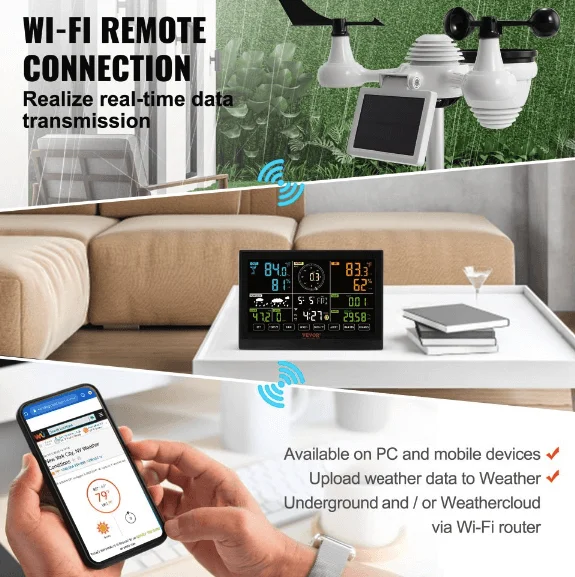
Tips for Maximizing Your Weather Station’s Accuracy
The best way to extend the capabilities of your weather station is by placing it in ideal locations, regularly calibrating it, and carrying out routine maintenance.
Let’s briefly discuss these points below.
Ideal Placement
The location you choose to place your weather station matters. You must keep it away from objects that can interfere with its signals and sensors. Some common interferences include:
- Signal towers
- High voltage lines
- Air conditioning units
- TV satellite dishes
- Microwaves
- Radios
Regular Calibration
Experts recommend that you calibrate your weather station at least every two years. Here are the steps involved in calibration.
- Step 1 (Preparation): Gather all the necessary tools, including a reference instrument, multimeter, calibrating solution, and data logger.
- Step 2 (Sensor Verification): Verify the accuracy of your weather station by comparing its readings with the readings of a reference instrument or verified sensor. Always note the discrepancies.
- Step 3 (Fine-Tuning): Now, adjust the sensors of your weather station to match the readings from the reference instrument. Always refer to your user manual to ensure you are fine-tuning it correctly.
- Step 4 (Calibration Testing): Confirm that you have accurately re-calibrated your weather station by testing it under different weather conditions. Compare the results to make sure they match the readings from the reference instrument and make any adjustments where necessary.
- Step 5 (Data Analysis and Documentation): Document the entire process as it will come in handy for future calibrations.
Routine Maintenance
Finally, never neglect maintenance. Think of your weather station as a pet that needs to be checked up on every now and then!
Here’s an expert maintenance checklist to guide you.
- Carry out regular physical inspections to check for signs of wear, loose parts, or damaged components. Replace them if necessary.
- Check the battery to ensure it is still working optimally. If needed, change it to avoid leakage.
- Regularly clean debris, bird droppings, dust, and other materials that may land on the weather station. Don’t forget to clean the sensors too.
- Check for any software or firmware updates the manufacturer of your weather station might release, and always implement them.
FAQs About Weather Station Accuracy
Are Weather Stations Accurate?
Weather stations are designed with high-quality sensors that enable them to accurately measure weather parameters such as humidity, wind speed, atmospheric pressure, precipitation, and wind direction.
However, the accuracy of weather stations can be affected by factors like sensor quality, lack of proper calibration and maintenance, or improper installation.
How often should I calibrate my weather station?
Experts recommend that a weather station should be calibrated once before it is initially put to use, and then subsequently every two years.
Can weather stations be trusted for professional use?
If maintained properly, weather stations can be used professionally as they are equipped with high-quality sensors that provide accurate readings.
What should I do if my weather station shows inaccurate data?
Weather stations can show inaccurate data due to low-quality sensors or interference from the environment. To fix this, you need to check and replace any worn-out sensors and then re-calibrate your weather station. Here are the steps involved in re-calibration.
- Get a multimeter, reference instrument, and calibration solution
- Compare the readings of your weather station with the readings from the reference sensor and note any discrepancies
- Fine-tune the sensors of your weather station to match those of the reference instrument
- Test the newly calibrated weather station under different weather conditions and compare the results with your reference instrument. Make any adjustments where necessary.
Conclusion
And there you have it. All the information you need to know about the accuracy of weather stations.
Weather stations serve as useful instruments for meteorologists, gardeners, and weather enthusiasts. They also help you stay on top of the weather to monitor climate change and be alert for any emergencies.
If you’ve been looking for an answer to the question, “are weather stations accurate?” This guide will prove to be resourceful.
Remember to calibrate and maintain your weather station often to avoid faulty readings. Plus, always choose high quality weather stations that are equipped to withstand harsh weather without compromising on quality.
Looking for the best weather station to try in 2024?
Try VEVOR.
The VEVOR Weather Station is everything you need and more. It is a multi-functional WiFi weather station designed with advanced sensors, intelligent monitoring, and durable power support. It is easy to set up and can remain functional for up to 12 hours in heavy rainfall.
Use the VEVOR Weather Station today and get access to easy, seamless weather forecasts at your fingertips!

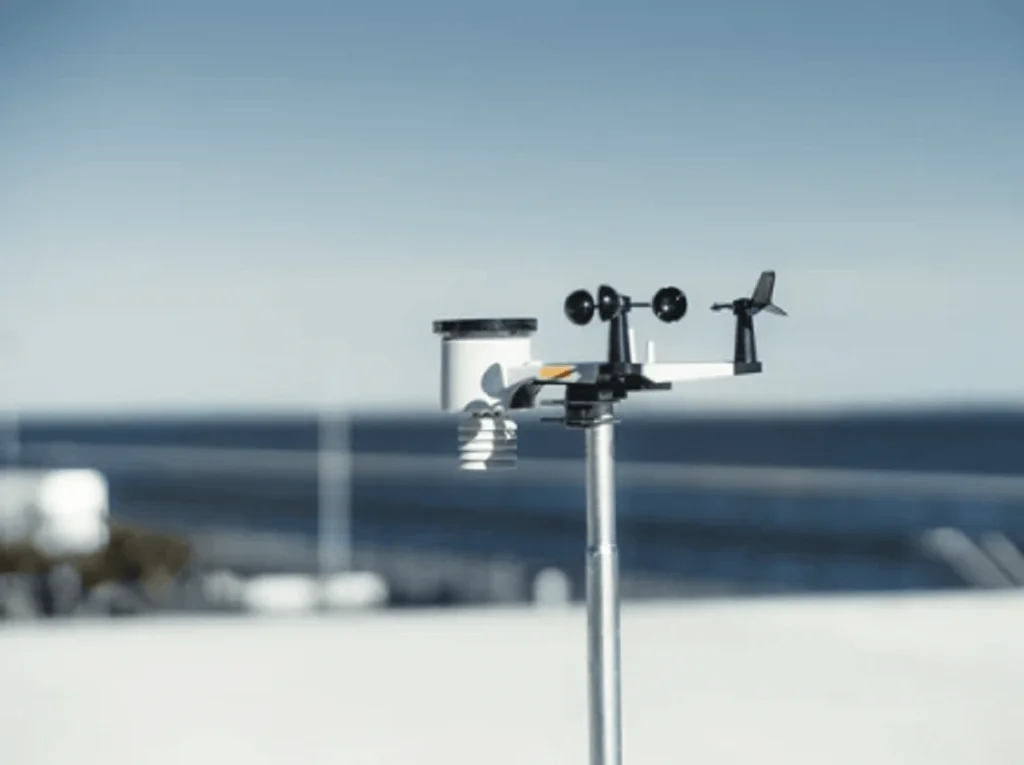
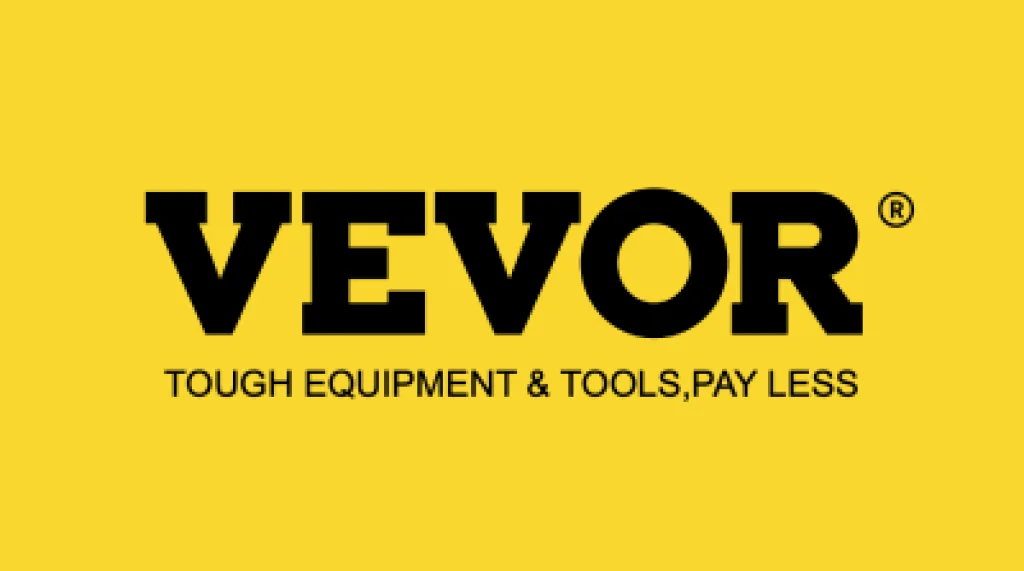
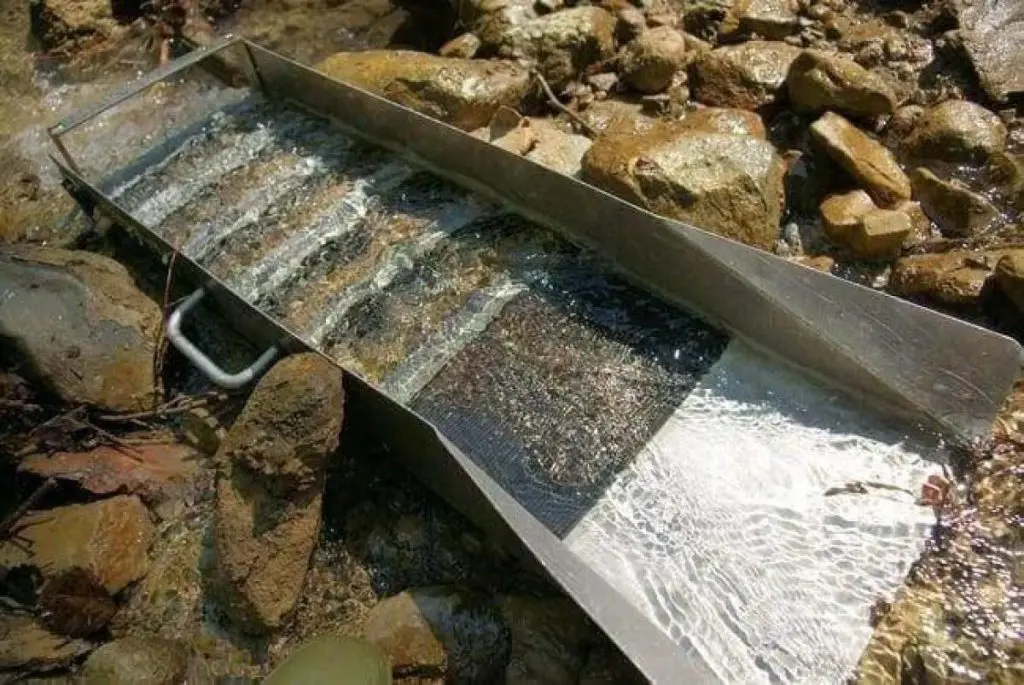
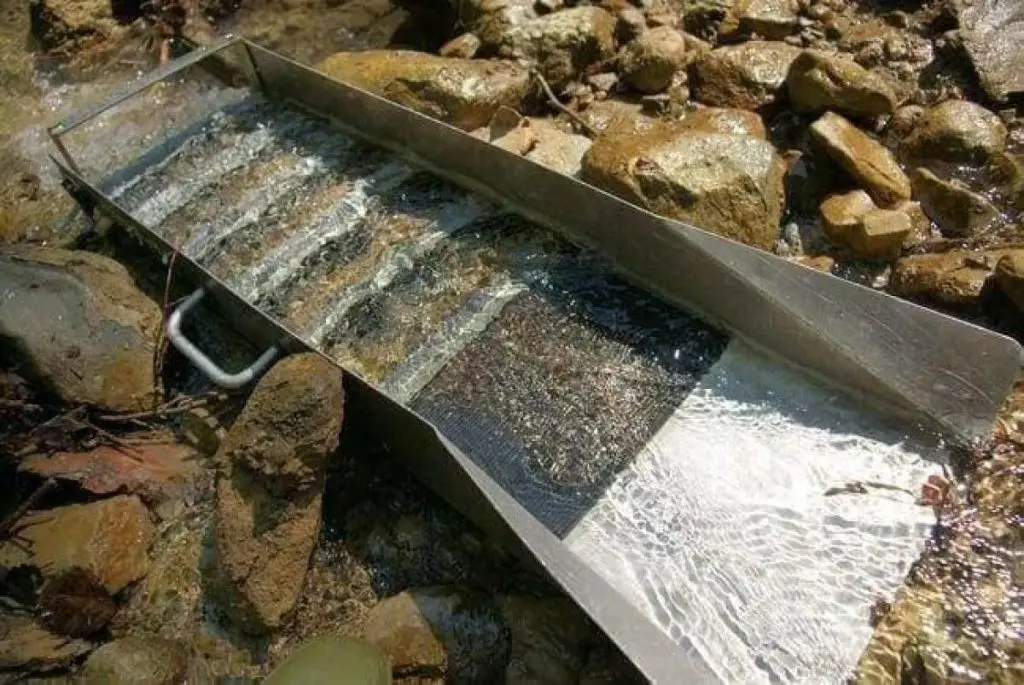
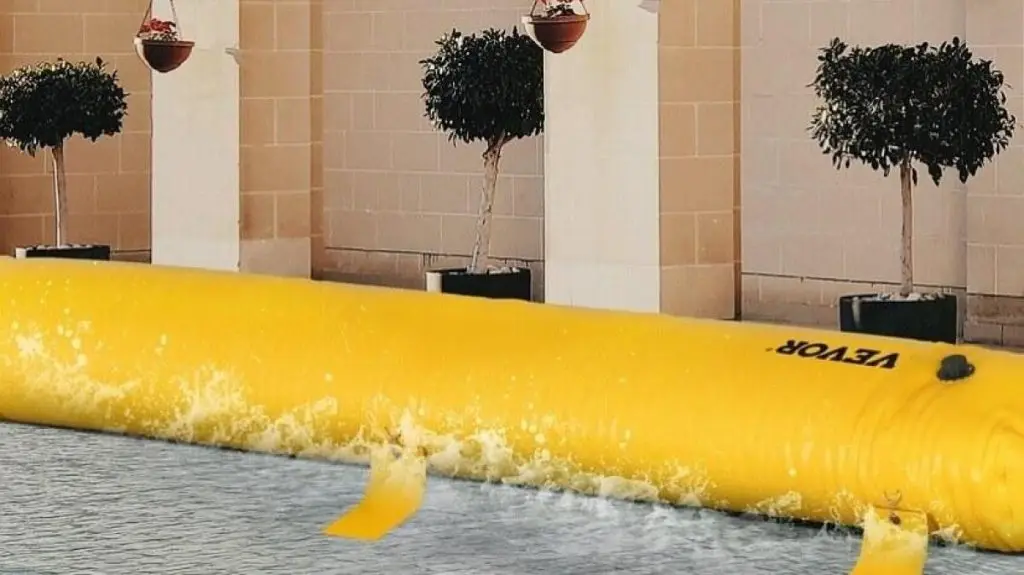
 Arabic
Arabic Danish
Danish Dutch
Dutch English
English Finnish
Finnish French
French German
German Hungarian
Hungarian Italian
Italian Norwegian
Norwegian Portuguese
Portuguese Romanian
Romanian Russian
Russian Slovak
Slovak Spanish
Spanish Swedish
Swedish